Jessica K. sent in a set of questions about WarioWare: Smooth Moves for the Wii that seem intriguing:
In WarioWare: Smooth Moves, there are different poses to hold the Wii Remote in called “forms”. Several of these forms had names that referenced Japanese culture, which were changed in the American localisation. One example is “The Elephant”, in which you hold the remote forward with the end lightly touching your nose, like an elephant trunk. The original Japanese name is “Tengu”, which is of course a reference to the Tengu’s long nose. I would like to ask if you know what some of the other localisations could be referring to in the original.
The Chauffeur: This one doesn’t even have a translation from the Japanese on the Mario wiki. The Japanese name is “まわりゃんせ”. Do you know what this refers to?
The Janitor: The remote is held with two hands, like a mop. It is known as “Prince Shotoku” in the Japanese, who I understand is a person from Japanese history or folklore.
The Boxer: The remote is turned on the side and held in the player’s dominant hand. The Japanese name is “Okappiki”, which is translated on the Mario wiki as “Detective”. My online Japanese-English dictionary clarifies that it refers to a “hired thief taker (Edo period); private secret policeman; private detective”.
The Mortar and Pestle: In this form, the player gently cups their non-dominant hand, making the mortar. The remote is gripped with the dominant hand and used in place of the pestle. The Japanese name is “Kobozu”, translated as “Priest”. Is this a reference to one of the duties of a young priest or something?
I would very much appreciate if you could tell me if you know anything that might clear up why these forms are called what they are in the Japanese original. Here is a link to the page on the Super Mario wiki if you need more information.
I hadn’t realized that this WarioWare game had this much localization done to it or that it was this Japanese-ish originally, neat! Anyway, while I’m no expert on some of the following subjects, I’ll try to give the best info I can.
First, just for reference, here’s the Tengu->Elephant change that Jessica already explained:
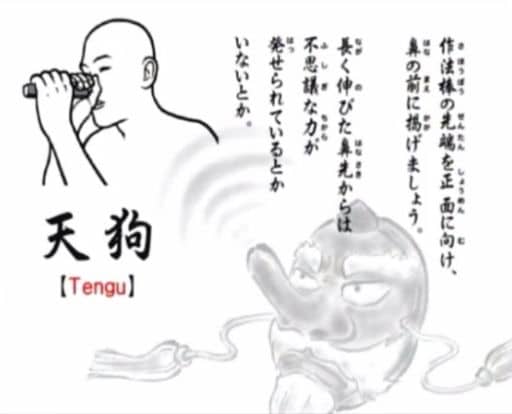 |  |
| Odoru Made in Wario (Wii) | WarioWare: Smooth Moves (Wii) |
That’s a pretty clever localization, nice work!
Next up on Jessica’s question list was the “Chauffeur” move, which is called “Mawaryanse” in Japanese. The Mario Wiki apparently leaves it blank, but why?
The truth is that it’s because it’s not very easy to explain. By itself it’s a sort of old-timey, dialect-y way of saying, “Go around (to some places and come back)” or “Go turn” or “Go spin” or something along those lines. But in this specific case it’s being used as part of a song in a Japanese-style celebration or festival dance, except where the song would probably mention “dancing” it instead talks about “turning” and a “bar”.
There is more to it than that and I’m sure I’m missing something myself since I’m not a native, but the simple answer is that this “mawaryanse” is a part of a Japanese song and dance. As such, it doesn’t have a good, simple English equivalent that would fit in its place.
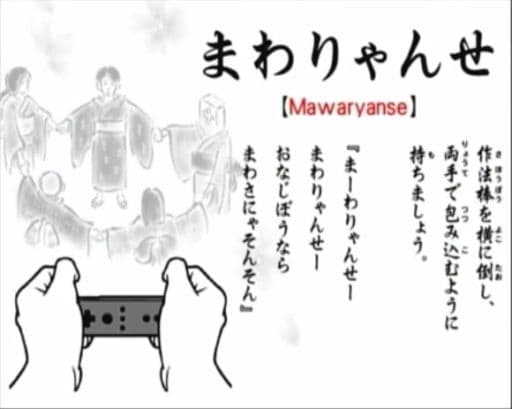 | 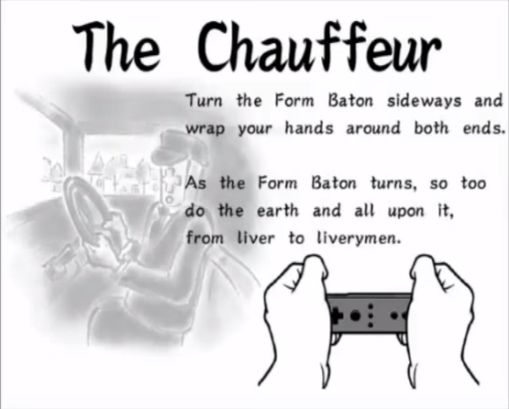 |
| Odoru Made in Wario (Wii) | WarioWare: Smooth Moves (Wii) |
Next, Jessica asked about the “Janitor” move. In Japanese, it’s called “Prince Shotoku”, who is an extremely important figure in Japanese history. Here’s how this move looks in both versions of the game:
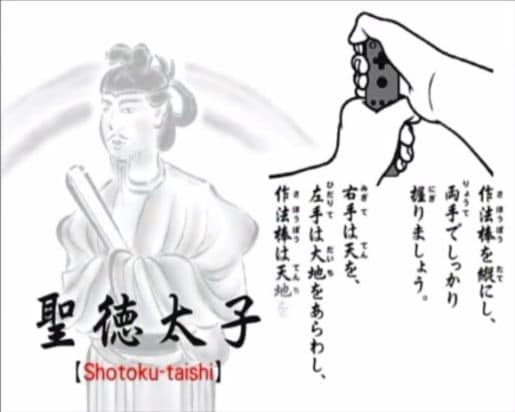 |  |
| Odoru Made in Wario (Wii) | WarioWare: Smooth Moves (Wii) |
You can already see it there, but Prince Shotoku is almost always depicted holding a “shaku”, which is a type of ritual baton. The description for this move in the game mentions that the right hand represents the heavens and the left hand represents the earth, thus the entire move represents the heavens and the earth and everything in between. It’s neat to see how they sort of kept that for the janitor localization!
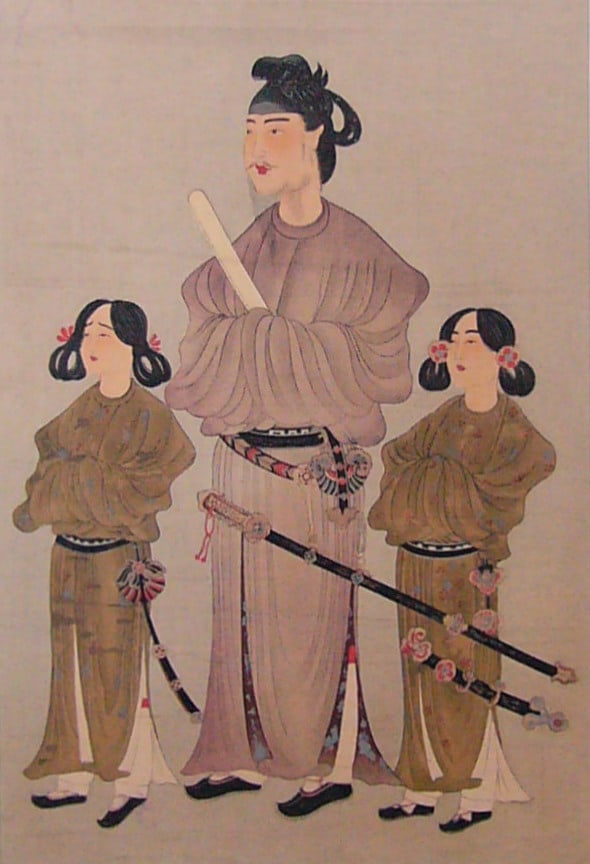 |
The next question was about the “Boxer” move, which is called the “Okappiki” move in Japanese.
Like a lot of things in Japanese culture, this is something that doesn’t have a good, simple equivalent in other cultures, so trying to boil things down to a one-word translation often doesn’t work.
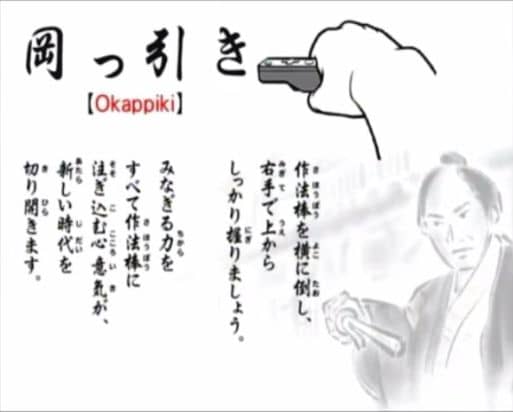 |  |
| Odoru Made in Wario (Wii) | WarioWare: Smooth Moves (Wii) |
In this case, “okappiki” were sort of low-class, unofficial aides for actual law enforcement officials during the Edo period. Okappiki were usually former criminals themselves and would do the dirty work that officials couldn’t do – things like spying, torturing, and such. They often did this work in exchange for the officials overlooking their own previous crimes. The feeling I get is that they were somewhat contemptible at the time, but have since become more romanticized in modern stories and entertainment. For more info in English, see here.
Anyway, okappiki are often depicted holding jitte, as seen here:
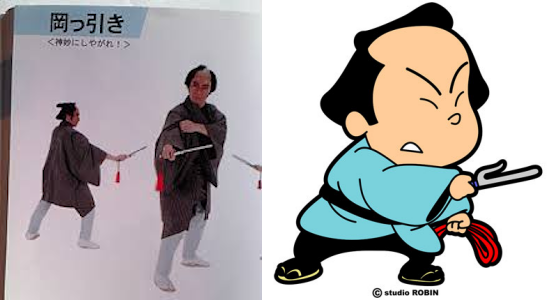 |
And that’s where the “Okappiki” move in this game comes from – an okappiki holding a jitte.
The next question was about the “Mortar and Pestle” move, which is called the “Little Priest” move in Japanese:
 |  |
| Odoru Made in Wario (Wii) | WarioWare: Smooth Moves (Wii) |
Honestly, I feel like I’m missing something myself, but in all sorts of media I’ve seen kid priests depicted grinding something. I always sort of assumed they were grinding miso for some reason, but I’m not really sure why. I think it’s because low-ranking priests tend to be called “miso-grinding priests” but that might be completely unrelated.
In any case, kid priests are often depicted grinding stuff, so that’s probably where this WarioWare move name comes from:
 |
Sadly, I can’t provide much more info than what I’ve listed above, but hopefully it helps explain the Japanese WarioWare stuff a little bit more. Those were all of Jessica’s questions about the game, but on closer inspection it looks like many more moves were localized. If you want to see more, check out the differences here!
As always, if I’ve gotten anything wrong (which is highly likely!) or if you have any info to add, please let me know in the comments or on Twitter!

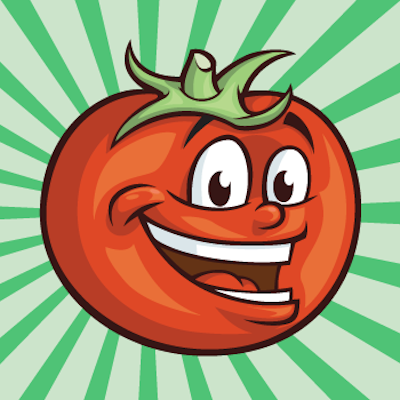
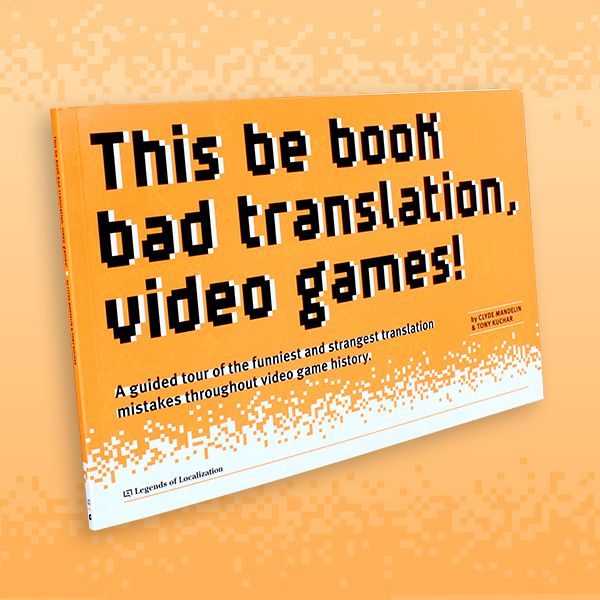
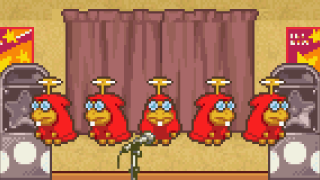
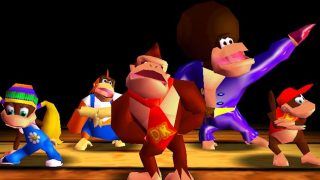
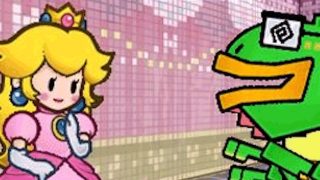
My, that was certainly a very informative article! I actually did know a little about Prince Shotoku before he was brought up, but still fascinating. These big differences kind of remind me of how they literally changed everything about the Game Boy Camera’s content to better “suit” the U.S. and European audiences.
What did they do with the Game Boy Camera’s content, exactly? I’m curious.
Anyhow, it looks like a lot of work went into this. I love a nice localization that goes the extra mile.
This page will tell you: http://tcrf.net/Game_Boy_Camera/Regional_Differences
It’s not massively significant, but I can’t help but wonder why some of those were changed.
Huh, pretty interesting. Indeed, rather a lot was changed.
I can’t tell why some of those were changed, either.
I know right? It’s baffling.
They did something similar with Tetris Attack/Panel de Pon.
This was awesome! Holy crap that amount of great localization makes me so happy. To see that much heart go into bringing it over is just great.
Had no idea how just Japanese this game was. Do you think they ever have hesitations in making something so heavy with Japanese culture because they know it’ll be hard work getting it localized?
Bear in mind this isn’t the gameplay, but rather just the explanations for how to use the controller for different modes. The series is full of very off-the-wall esthetics though, and this game is no different. I don’t know if I’d say the esthetics in WarioWare are especially Japanese as they veer into so many different styles, but the humour certainly is. Give one of the games a try!
Sooooo… why were all but one of those priest kids’ eyes blurred out? Why’s the kid on the far left so special?
“The Mario Wiki apparently leaves it blank, but why?”
Because quality control on Mario Wiki is all over the map, which is why I don’t recommend people actually use it as a legitimate source.
There’s a reason why Wikipedia isn’t an academic source, and for that matter the same goes for absolutely ANY Wiki – however, they’re still good starting points when you want to look things up. I find Mario Wiki to be one of the better fan-wikis out there because the people and policies in charge strive to keep things strictly objective, but that doesn’t mean idiocy doesn’t slip through. That is the curse of the Wiki Way.
Even though they say never use Wikipedia as a source, i still did it all the time back in college. I would just use whatever sources wikipedia listed as my listed sources, and my teachers were none the wiser.
Wikipedia actually aims to be one, believe it or not, which’s why only “notable” subjects allowed.
You can tell that it’s “notable” if it’s covered by “reliable sources”.
You must also give out said sources that state the information, or else it’s valid for deletion (or at least the claims about it).
Also, A policies of the wiki aims to have a “neutral point of view” towards the articles as well.
It really irritate me to learn of this sort of localization, particularly in Nintendo games. My problem isn’t with the localization choices themselves but the fact that they were even necessary to begin with. Nintendo is a global company, and by the time Smooth Moves was made Warioware was a globally successful franchise. *Why* would you implement so many references to your culture that the outside world world wouldn’t understand, when you know time and money will have to be spent changing it so the rest of the world will find it relatable? Heck, show me one those changes–the chauffeur, the elephant, whatever–that wouldn’t have worked just as well in the Japanese version. I’d wager most Japanese gamers aren’t so enamored with traditional Japanese culture that they’d think any less of the game. And maybe it’s because I don’t play many games made by Western developers, but I can’t think of an analogue for Western games that are localized for Japan. At least I don’t think The Last of Us was filled with references to cowboys and football.
It bothers me in a completely different sense in that in the very first Warioware game it was shown that Wario and friends live in a place called Diamond City, presumable a part of the same Mushroom World as the rest of the Mario series and related games. The only place on the entire Diamond City map that resembles Japan is Kat and Ana’s traditional Japanese-style house (http://www.mariowiki.com/Kat_and_Ana%27s_House). So unless the microgames in question appear Kat and Ana’s portion of the game, it doesn’t really make much sense for Wario and co. to be designing games around Japanese cultural motifs such these (I know, the Warioware games don’t usually make much sense anyway, but there’s usually more cohesiveness than that).
Possibly because it’s fun to have cultural references in the game. That’s a reason, yeah? Clearly Nintendo didn’t object to the additional expense involved in localising them, so it’s not really clear what the issue is.
dude you take mario way too seriously
@Nag It’s a video game franchise that I love. I don’t think there’s a limit to how serious I should take it. Frankly, this derisive tone I encounter whenever someone dares try to hold Nintendo to task with the characters, placed, and stories they’ve made throughout the series is getting really old. Just saying “you take Mario too seriously” or “LOL Mario canon” is a lazy way of getting out of actually responding to someone who is more of a hardcore fan than you.
@To your average Japanese gamer, how is stirring a bowl as a chef any less fun than stirring it as a Japanese priest? One can only be appreciated by people in your own culture and fails to take into account that you’re making this game for a global audience, the other isn’t.
Chefs and elephants are universal, Shinto priests and Tengu aren’t.
And why does this matter? You might have a point had Nintendo not changed them in the international versions, but that’s clearly not the case. So what’s the problem?
Technically it’s Wario. The connections to the “parent series” tend to be weak at best.
I wouldn’t call a fixation on menial jobs and a weird animal living in the tropics culturally universal. While I’m sure a lot of Japanese would *recognize* the references just as well, one cannot disregard how pretending to perform wage labor while playing a video game affects the experience, or how different cultures see different animals as unclean or gross.
If you had a choice, wouldn’t you rather unconsciously associate your movements with a cool prince instead of mopping a floor?
“*Why* would you implement so many references to your culture that the outside world world wouldn’t understand, when you know time and money will have to be spent changing it so the rest of the world will find it relatable?”
I’m pretty sure that they were aware that these reference would have to be changed from the beginning. But honestly, I doubt it took that much time or money, in the end the only difference is that the picture of the tengu is replaced by an elephant, but everything else had to be translated anyway, so it really makes little difference of time and money.
And while it may be weird to put japanese culture references such as a tengu in a place like Diamond City, well… everything is weird in the Wario Ware serie, nothing has much sense, so why not make it even weirder by putting these references in all of the moves’ name? After all, the weirder, the better!
Plus, I think it’s cooler to have references to your own country, and they even added a cool reference in the French version of the elephant, where it says “C’est un roc, c’est un pic, que dis-je, c’est une trompe d’éléphant !” (It’s a rock! A peak! Forsooth! It’s an elephant trunk!), it’s a reference to Cyrano de Bergerac, where he says, talking about his own nose: “C’est un roc ! C’est un pic ! C’est un cap ! Que dis-je, c’est un cap ? C’est une péninsule !” (It’s a rock! A peak! A cape! A cape? Forsooth! It’s a peninsula!)
“My problem isn’t with the localization choices themselves but the fact that they were even necessary to begin with. Nintendo is a global company”
No, it’s a Japanese company with a global business. The original Japanese version is not *for* you, it is for the legions of kids and adults who grew up in Japan, and are familiar with these references.
I disagree with NaG, you don’t take Mario too seriously; you don’t take it (and/or localization) seriously enough, or else you wouldn’t have such an uninformed opinion. It sounds pretty pretentious to assume that the Japanese developers making a Japanese language game for Japanese kids is somehow doing you a disservice by acknowledging their own culture in a piece of software you can’t even buy outside of Japan.
“Heck, show me one those changes–the chauffeur, the elephant, whatever–that wouldn’t have worked just as well in the Japanese version.”
ALL of them wouldn’t have worked as well as the native Japanese versions. As Yosh points out, the French version has a cool cultural joke, because the French market is more culturally unified. If the English version was US-only, and not an international release, the localization team may very well have made moves like “The George Washington,” etc, to get across the feeling of tradition, metaphor and history.
Would “The George Washington” be a reference to chopping down the cherry tree?
The Japanese devs thought it was cool.
Now imagine GTA devs forcing themselves to not show guns but replace them with laser guns or water spraying guns (since America is pretty much the only place in the world where gun ownership is allowed at such a widespread scale, and the game “must have global appeal”). No burgers. No bacon. Historical landscapes and monuments removed left and right.
In fact, if they would want to have a “global appeal”, the end result will be much like earlier PAL releases, where blood is removed and everything that moves becomes a robot. Because ONE country (Germany) doesn’t see it in a good light, and since the game appeals to the lowest common global factor it will follow those standards.
It would be hindering the creative process. We have too much “westernized-appeal” games (Final Fantasy’s latest releases, Metroid Other M, Resident Evil 6, and so on…) where all inspiration was sucked out and the end result was shallow.
No need for more.
Personally, I think you should chill out a bit. Besides, there’s nothing too strange about a bunch of Japanese references in WarioWare.
I mean, there are three pretty good possibilities here (in universe):
1. These poses merely exist for the audience, not the characters in game. They’re like how TV shows translate foreign languages so the viewers can understand what the characters are saying. Or in this case, how the game works.
2. Nothing says the concepts and people these poses are based on didn’t exist in the Mario universe. It’s unlikely, but hey, they could have had everything from their own Prince Shotoku to their own George Washington. They could be references to something in universe, not out of it.
3. The characters have some experience of Earth culture, as seen as some Mario Party games, some olympic games, etc.
It’s not that big a deal.
On another note, the article was pretty interesting. Although I’d love it even more if an article was written that went from culture references in the actual microgames or storylines rather than just the poses before the microgames start.
I wanna know more the opposite–why do they think the rest of the world will be repelled by Japanese cultural references?
If menial jobs such as cooking or mopping floors is severely looked down upon in the East, you may have a point. But it begs the question what gamers there think of Mario being a plumber, construction worker, or demolition man.
But is an elephant really a “weird animal living in the tropics”? Not unless you have never seen an elephant in a zoo, or on TV, or in a movie.
It’s not like Japan is a third world country — they’re just as exposed to the outside world as we are, and they actually have elephants native to Asia.
Look, put simply, this is basically a case of “Homeland first, everyone else second” we see in every entertainment product ever. Nintendo makes things for Japan, then they modify them however necessary for everyone else. We’re just a secondary market, so they add in whatever obscure Japanese folklore references they want, then they try to adapt the game as much as possible to foreign audiences. I mean, can anyone honestly say they make things entirely for the international community without taking into account what their own homeland would want, first?
Long story short, it’s a Japanese game made for Japanese audiences in Japan. Therefore, it has a lot of references to Japan. I don’t really see the big deal, here.
I don’t think Asian elephants, native to south east Asia like India, are native to Japan, a country in far east Asia, higher up from the south eastern counties.
Elephants are in the Japanese version of the game, in any case.
https://www.youtube.com/watch?v=7kfNnvbpOkY
Oh my gosh, I can’t believe this actually made it to the site!
Thanks a lot for explaining this, it is certainly enough in my eyes. Really interesting to learn about those tidbits of Japanese culture and history! Poor Shotoku though, lost his crown and had to take a job as a janitor XD
That’s some pretty cool localization! I can imagine making such decisions has to be pretty challenging, but it’s pretty cool to study/read about.
I think the closest thing we have to the concept of the okappiki in western cultures is that of a goon. Even there it’s not really a good 1:1 comparison since goons aren’t necessarily criminals (though movies tend to make them out to be), and goons are generally not employed for police action so much as for private bodyguards and the like. Those are all quite tricky things to accurately translate to English, and a fine example of why localization really is a good thing!
Something I noticed about many, but not all of the English moves: each one’s name and imagery are represented in some way by at least 1 microgame that uses that move. For example, the Elephant has a microgame where the player must take control of an elephant’s trunk to grab a ball and give it to a lady, and the Janitor has a microgame where the player sweeps a broom left and right.
However, this does not apply to all of them. The Finger Food has no microgames involving directly touching food at all (in Now You’re Cooking!, the player turns a stove dial to cook eggs but does not manually crack the eggs into the skillet with the Wii Remote).
Seeing this article reminded me of something not really related, but I’d like to ask about anyway: it is about the use of the circle for “yes” and cross for “no”. The use of a circle for “yes” is said to be a Japan-exclusive tradition, but my memories disagree.
I was playing Paper Mario for Nintendo 64 today, and while answering a Chuck Quizmo question, it occurred to me that, long ago, I was surprised to learn that circle for “yes” is considered to be exclusive to Japanese culture. Before I learned that, I thought that the circle was just one of many symbols for “yes” that was available in countries that speak European languages and never considered that symbols would be different between Japan and everywhere else.
Certainly, I knew that the checkmark is more common as a symbol for “yes”, but even before learning of the existence of the PlayStation, I knew that the circle meant “yes”.
Sometime before I got to play my first PlayStation game (Crash Bandicoot 2: Cortex Strikes Back), I had already learned the convention of circle for “yes” and cross for “no”. Naturally, when I booted Crash 2 for the first time, I found myself wondering why cross was for “yes” when I expected it to be circle. This is not because the circle button shares the same location as the A button on the Super Nintendo controller; I genuinely assumed that circle was for “yes” and would most likely not have thought any different if circle was in a different location.
Using a green circle to mean “on” and a red X to mean “off” is pretty common on machinery buttons all over the world, I believe.
I’m reminded of a Detective Conan case that ran a year ago about something similar. If you don’t mind spoilers for a semi-important story (it’s a lead-in to something much more important):
The victim of the attack was a teacher at an elementary school. She was friends with Jodie, a supporting character from America who had taught at the protagonists’ high school at one point in the series, and had been the one to teach Jodie Japanese while studying with her in America. She was attacked in her classroom and then dumped outside to disguise this fact – this is determined by the marked answer sheets on her person (a teacher would never take a full set of marked sheets home with them because of potential information leaks), which are photographed for Inspector Megure to look over while they are being examined by forensics.
It’s pointed out to Megure that correct answers appear to be marked incorrectly on the sheets underneath the 100% correct top sheet, with particular note made of a sheet that has a 100% mark but every answer marked as incorrect. The character who pointed this out then asks Jodie to confirm that “while in Japan, correct answers are circled and incorrect answers are checked… in America, it’s the other way around!”
Because the teacher had worked in America for so long and had only just returned to Japan, she still marked her students’ work in an American-influenced style. Therefore, the culprit had to have been the one who marked the top sheet in Japanese style, probably to cover up blood-splatter on the paper. This ends up highlighting another strange thing about the sheet that points directly to the culprit, who had originally visited to complain that their child’s answer sheets had been marked incorrectly ‘for handwriting’.
The fact that the systems were direct opposites of one another resulted in a fictional character being bludgeoned in the head and thrown down a flight of stone steps!
To this day, I still have no idea why they swapped the functions of X and O. Apparently it’s because westerners wouldn’t get it, but X meaning “no” is a thing in the west too, it’s just that that X is usually red.
Hey, Tomato, speaking of Warioware Smooth Moves, what are the names of these little—things…in Japanese? If you remember the game, it’s those little guys that stole Wario’s food in the beginning.
http://www.mariowiki.com/Splunk
The English version says they’re called “Splunks”, and I think it said that somewhere relegated in a post on the main map. However, the Mario Wiki says nothing about what their names are in other languages, if they’re even given any names at all (it could be a case where any name given was an invention by the localization team, similar to the whole Earthbound “Nico” case)
I need to know this for reasons. Thanks in advance!
Wait, never mind, I have found out through extensive Japanese Wikipedia-ing of the Made in Wario article that they are called スプランクス (Supurankusu). So, basically, the English name is a mere cleaned-up romanization.
Hmmm, could the name possibly be a reference to the infamous Spelunker video game, which is called “スペランカー” (Superanka) in Japanese?
Heck, Nintendo of Japan’s official website for Oduru Made in Wario uses the English name for Splunks somewhere: http://www.nintendo.co.jp/wii/rodj/sahouden/index.html
Man, I hate replying to myself. If only there was an edit option…
Here are all the Japanese moves if anyone is interested:
http://club.tgfcer.com/thread-5826631-1-1.html
Woah, arguments in the comments.
I just want to point out that Rhythm Tengoku for the GBA never got localised. It even contained an extremely Japanesey “don, don, PAN! PAN!” minigame with Kimono ladies, which would have needed some heavy localisation for it to make sense outside Japan. Does the inclusion of stuff like this make it less likely for a localisation to occur? Maybe, but I also want to point out that the second game on the DS was completely localised into English, Spanish, French, German and Italian, everything including all the vocals, lyrics and even the one background menu song that had “one! two! one! two! three!” …. it was was localised into every language perfectly.
Basically, the Japanese can make their game as Japanesey as they want, and if later on they wanna put in the effort of localising it, they can do it and it will be appreciated.
“Woah, arguments in the comments.”
At least this isn’t as bad as that whiny Greninja rant from a few months back.
On topic: Japanese references in a Japanese game? Color me shocked!
Whiny Greninja rant?
Oh, SSB fans, it’s just like it was three years ago…
To be honest, this isn’t really much of a fight. I’ve been in the middle of full scale internet wars before.
And back on topic, yeah, it isn’t like it’s unexpected for Japanese games to be very Japanesey.
WarioWare games certainly are fun. So quirky in a sense.
Anyways, Mato, I guess you should that cutscene from Jak 2 I have send you earlier in Facebook. You know, that one before the boss in Mar’s Tomb where a certain word was actually rendered in the in-game alphabet. Something that the other dubs lack as far as I know. Also, do you know other games where words would be rendered in a custom alphabet like this? Note that this is different from the scene from Super Mario RPG where Geno introduces himself with weird alien glyphs.
I personally do like the fact the they rendered the word Hora-Quan in the Precursor alphabet in first place. Especially since the localization team could have just rendered it as ホラクアン or something like that and be done with it. Really shows that they went the extra mile here.
I’d love to see all the Japanese descriptions of each move translated someday, so that people can compare them and see just how much was changed.